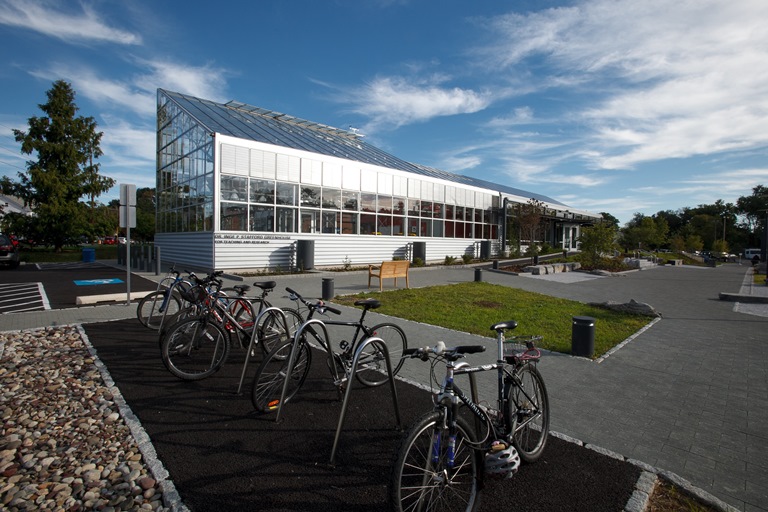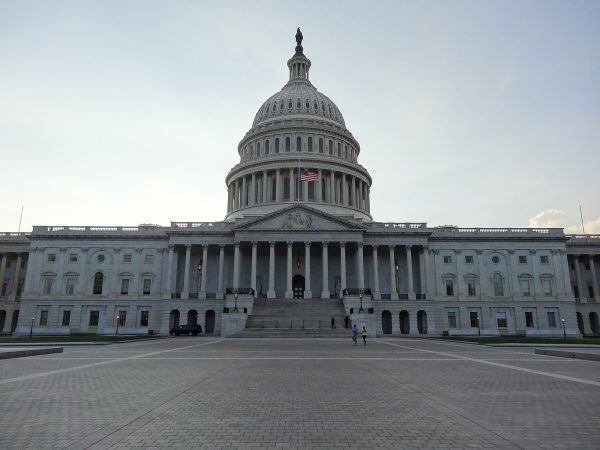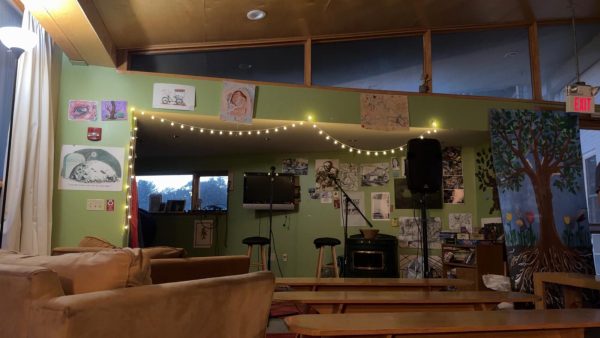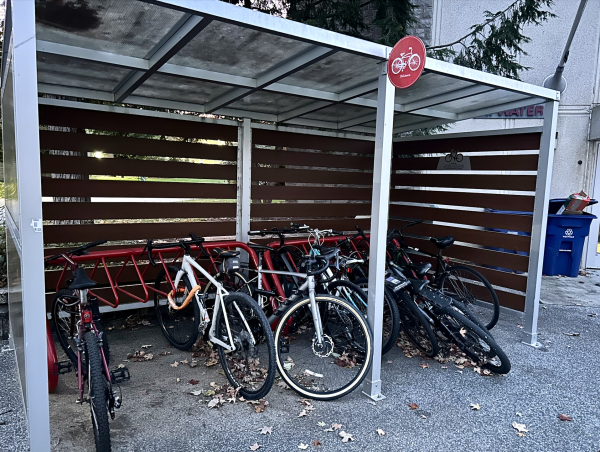“What Comes Next?” Dickinson Looks to the Future After Achieving Carbon Neutrality
After reaching their goal of making Dickinson a carbon-neutral institution by 2020, sustainability leaders at the college are looking to build on that success by focusing on efficient transportation, more renewable energy and increased student engagement.
“We are not at a plateau,” said Lindsey Lyons, Director of Sustainability Learning at Dickinson’s Center for Sustainability Education (CSE). Though some emissions are “unavoidable,” such as the international flights necessary for a robust study abroad program and car emissions stemming from faculty commutes, Lyons sees a path to further reducing the college’s carbon footprint.
When then-President of the college William G. Durden ’71 signed the American College and University Presidents’ Climate Commitment (ACUPCC) in 2007, Dickinson pledged to become carbon neutral by 2020. The college reached that goal by reducing total emissions by 50% and purchasing offsets to counter the remaining carbon balance of around 7,500 metric tons of carbon dioxide equivalents.
In fact, the reduction to total emissions was far steeper than originally laid out in the 2009 Climate Action Plan. Dickinson had aimed to cut gross emissions by 25% by 2020, 50% by 2025 and 75% by 2030.
Ken Shultes ’89, Associate Vice President for Sustainability and Facilities Planning, referenced several unanticipated events to explain the overachievement. First, he said, though the college added both student population and square footage, which made it more difficult to reduce emissions, the carbon-intensity of the electric grid decreased, countering a change that might have foiled the 2020 goal.
“COVID helped,” Schultes added. With fewer students on campus in 2020 and 2021, Dickinson’s emissions decreased sharply. Even this year, study abroad and college-related air travel are down from pre-pandemic levels. Still, with campus operations back to normal, the college will need to purchase more carbon offsets than it did last year.
As for what the college can do to further decrease emissions, Emily Pineo ’23, Communications and Outreach Intern at CSE, said, “the real weakest point we have at Dickinson as far as carbon emissions is the amount of unnecessary transportation going on on campus.” Transportation accounts for a quarter of all campus emissions.
For Shultes and Lyons, however, transportation is only part of the equation. The project that Shultes identified as the most impactful in reducing emissions between 2008 and 2020 was the college’s solar field, constructed in a power-purchasing agreement with Tesla back in 2018. “The solar field was really meaningful. That single project eliminated 10% of our emissions,” said Shultes. He plans to push additional solar projects on campus, particularly installing solar panels on the roofs of buildings.
A less visible but likely more impactful project is the college’s central energy plant. Though few students even know that the plant exists, “We know that it is the single biggest source of emissions,” Shultes said. To make a serious dent in the college’s carbon footprint, Shultes believes the plant must either be replaced by a geothermal heating and cooling system, or be converted into a hot water plant. Shultes said, “to be truly carbon neutral, you have to stop burning fossil fuels, and we are combusting natural gas on campus.”
Lyons and Pineo see another potential obstacle to continued sustainability efforts: student engagement. In the fallout from the COVID-19 pandemic, Lyons said, “It’s definitely different…engagement in student clubs is way down.” In previous years, she said, there were “10 to 12 different sustainability-related clubs.”
Currently, the “Farm & Sustainability” category on Dickinson’s student organization directory contains just three clubs other than CSE itself. These include Tree Club, which has not listed an event on the site in three years and the now-defunct Sunrise Carlisle, leaving the Ethical Eating Club as the only active sustainability-focused student organization on campus.
Pineo said, “The thing that concerns me most about the college’s sustainability efforts is definitely the social sustainability struggles occurring on campus since post-online/covid classes. I’ve seen a drastic decline in engagement from other students…We seem to have forgotten how to be welcoming to everyone in the spaces we exist in.”
Though institutionally supported events like the well-attended IPCC symposium last month have created excitement among students, that has failed to translate into additional action. “It’s not like the interest and passion isn’t here,” Lyons said, but “I haven’t engaged with a student Sustainability Club this year. That worries me.”
Shultes observed a similar phenomenon, though he said “the students who are engaged with these efforts are phenomenal.” The difference, according to him, is that students do not feel a sense of “control” over how the college approaches environmental issues. This leaves CSE and other administrator-led institutions to take the lead. Lyons said, “that’s not what I want…there needs to be both [student- and college-led engagement].”








